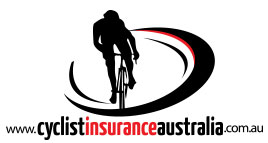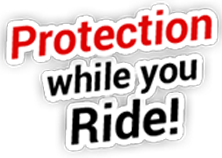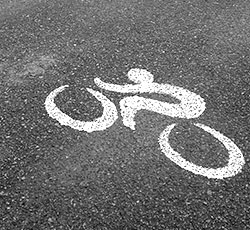Tips for Staying Safe on the Road
In Australia, cyclists are among the most vulnerable of road users. They have the highest proportion of self-reported near-miss crashes, which is significantly higher than that of motorists. The average probability of a cyclist being seriously injured in a collision was almost 27% - that's more than 1 in 4 crashes resulting in a serious injury.
A factor that influences vehicle and bicycle collisions on the road is that drivers are unable to detect cyclists until it is too late to avoid a collision. These accidents are called "looked-but-failed-to-see" crashes and occur when a driver looks as she or he should before proceeding to drive, but fails to see the cyclist in the way. This suggests that cyclist visibility on the road may be an important factor in collisions.
Tips for staying safe
Whether you're driving, cycling or walking, there are measures you can take to ensure a safer trip for everyone. It's important to abide by the road rules and to know your rights and responsibilities when on the road. Here are a few safety tips that drivers and cyclists should keep in mind when travelling on the road.
Drivers -
- 1. Be fair - First and foremost, drivers should always keep in mind that roads are not exclusive to cars. Cyclists are legitimate road users and should be treated with respect and courtesy, like any other commuter on the road.
- 2. Check blind spots - Be aware of pedestrians and cyclists on the road and make sure to check blind spots when changing lanes, overtaking and before opening the car door.
- 3. Be patient - Before overtaking a cyclist, ensure you give them plenty of room and only turn when it is safe to do so. Cutting in front of a cyclist with short or no warning can be very dangerous. If a cyclist is in front of you and you are turning left, make your turn behind the cyclist.
- 4. Take extra care at night or when wet - Lack of visibility is a major cause of accidents between motor vehicles and bicycles. Make sure you check for cyclists at night, dusk, dawn and in wet conditions. Be considerate and dip your headlights when approaching a cyclist.
- 5. Look out for kids - Young cyclists are not always predictable and may be less aware of road safety compared to adults. In all Australian states, children under the age of 12 are allowed to ride their bikes on footpaths, but it's important to drive with caution near schools, residential areas and intersections.
Cyclists -
- 1. Safety gear - Always wear a standards approved bicycle helmet and any necessary safety equipment before hopping on a bike. This is something you should never compromise on.
- 2. Be alert - When cycling in traffic, make sure your eyes and ears are tuned to the road. This involves constantly scanning behind and in front of you. By doing this, you are making other road users are aware of your presence and you are aware of theirs.
- 3. Be predictable - Before heading out on the road; make sure you are physically and mentally prepared to ride in traffic. Riding consistently, signalling when necessary and abiding by the road rules will be reassuring for other road users.
- 4. Make sure you're visible - Increased visibility of cyclists may reduce the number of vehicle/bicycle accidents in Australia. Wearing highly visible light-coloured clothing while riding will make it easier for drivers to spot you, especially at night or in wet conditions.
- 5. Keep a distance - Cycle about one metre away from the curb or parked cars to avoid getting hit by opening car doors, or any debris or broken glass being swept off the side of the road.
- 6. Choose a safe route - When possible, choose a route where cyclists are separated from other road users, for example bicycle paths.
No matter how we choose to travel - drive, cycle or walk - the road is there for everyone to use. Respecting all types of commuters and abiding by the road rules can make travelling on the road a safer experience for everybody.



